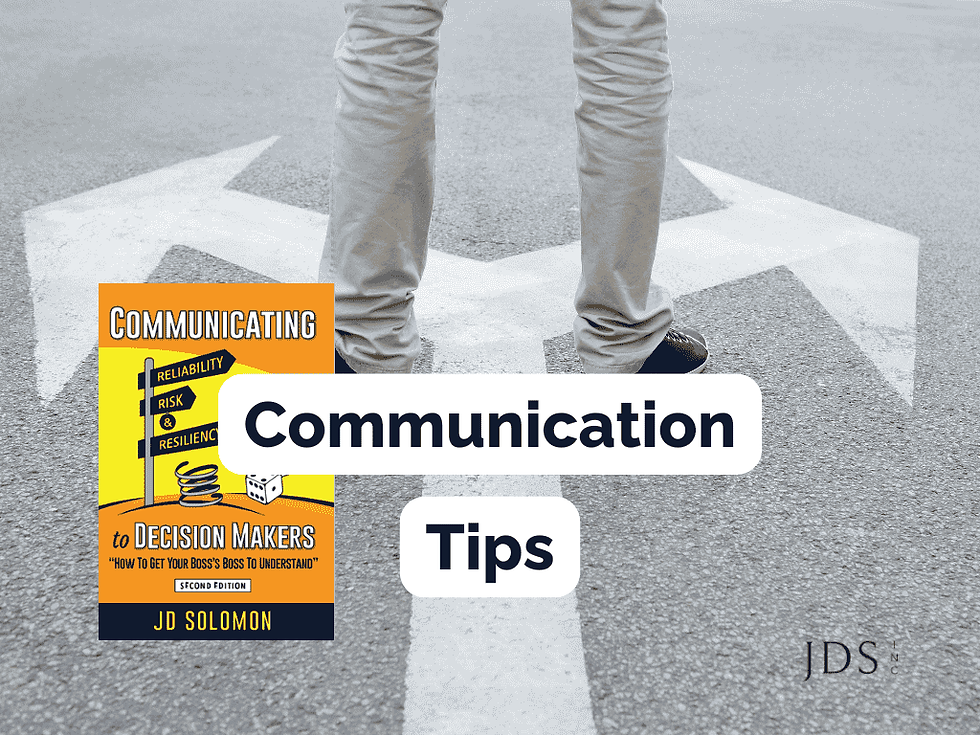Too Many Variations? How to Know the Right Design-Build or EPC Firms
- JD Solomon

- May 2, 2023
- 4 min read

One of the biggest decisions an owner will make is choosing the right construction project delivery method. The decision is complicated by the number of architects, contractors, and engineers who do not wish to be squeezed out of an opportunity. Variations of delivery proliferate. Suddenly, everyone is an EPC or design-build firm.
Highlighting Three Methods
Design-Build
The owner contracts with a single entity, typically a design-build firm, to design and construct the facility. This model provides the owner with a single point of responsibility for the project's design and construction. This model can reduce project delivery time, allowing for increased collaboration between the design and construction teams.
EPC
The owner contracts with an engineering, procurement, and construction firm (EPC) to deliver the project. The EPC firm handles the design, procurement of materials and equipment and construction of the facility. If the owner knows what they want, the EPC model can provide that while lessening the owner's risk. However, the EPC model can be more time-consuming and costly than the Design-Build model, since the EPC contractor assumes control and delivers the project in the best sequence for the contractor.
Engineering, Procurement, Construction, and Management (EPCM)
EPCM is a project delivery model similar to the EPC model but gives the owner more control over the project. In the EPCM model, the owner contracts with an architectural or engineering firm to provide design and engineering services and then separately contracts with procurement and construction firms to procure materials and construct the facility. The EPCM model allows the owner to keep control over the project while still receiving help from the expertise of multiple contractors.
Similarities
Design-Build and EPC have both existed as project delivery methods for decades.
The contractor handles the design.
The owner has a single point of contact for construction
The contractor takes on more risk than a traditional design-bid-build delivery method.
The Major Differences
Most design-build contracts provide some design detail in the bridging documents developed by third-party engineers or architects who later function as an owner’s agent. While some preliminary work may be done before the EPC contractor is hired, EPC contractors are usually given performance requirements and handle all of the planning, design, permitting, and construction activities.
Design-build can expedite projects, primarily because the owner and multiple parties are involved. In EPC, the EPC firm is completely responsible for the schedule.
Design-build closes out similarly to design-bid-build contracts– the owner and its designer (or construction manager) commission and punches out the completed project. The EPC contractor provides a completed and punched-out working facility for an EPC project.
Most contracts transfer much more risk to the contractor in the EPC method. Design-build contracts involve third-party owner agents (architects or engineers) throughout the process. Relationships and contracts tend to take a traditional approach to unknowns. In design-build, the owner shares more risk because of their involvement.
When to Use Each Method
Design-Build
Use Design-Build when you have a good idea of what you want but not exactly what you want. Design-build is a high-collaboration, high-trust game, so the owner's organization must have that culture and risk tolerance.
EPC
Normally used on small, specialized projects or large projects. In both cases, you should have a good idea of what you want.
EPCM
Only when you love your architect or engineer and are unwilling to cut them out of the project.
Design-Bid-Build
This is the old standby. Use it when the organization does not know what they want, is risk-averse, cannot make prompt decisions, or has a high degree of cost accountability.
How to Spot the Fakers
You will know the firms that are fakers by their proposed contracts. Traditional design firms, design-bid-build contractors, design-builders, and EPC firms all have unique contract language around how they handle risk.
One example is a traditional engineering firm turned design builder. We specified standard industry contract documents. The counterproposal by the firm after being selected was to use their contracts. After review, it was obvious to me that most of their standard language read like designers, not contractors or design-builders. I questioned the firm on this, and their senior leadership confirmed that their “legal culture had not yet caught up to the direction of their company.”
Another example concerns a new moderate-sized research facility where the owner liked the EPC model. A local, politically connected architect tried to steer the project toward EPCM, a direction they were branding to catch what they said was a rising tide of EPC. The language in typical EPC contract documents was similar to construction manager at risk (CMAR), not EPC or EPCM.
Moving Forward
One of the biggest decisions an owner will make is choosing the right construction project delivery method. The decision is complicated by the number of architects, contractors, and engineers who do not wish to be squeezed out of an opportunity. Variations of delivery proliferate. For owners:
Start the evaluation early.
There is no substitute for experience – make sure to check references and ask about the details of the delivery method.
You will know the fakers by their contracts and the way they manage risk.
JD Solomon Inc provides solutions for program development, asset management, and facilitation solutions at the nexus of facilities, infrastructure, and the environment. Sign-up for monthly updates.










Comments